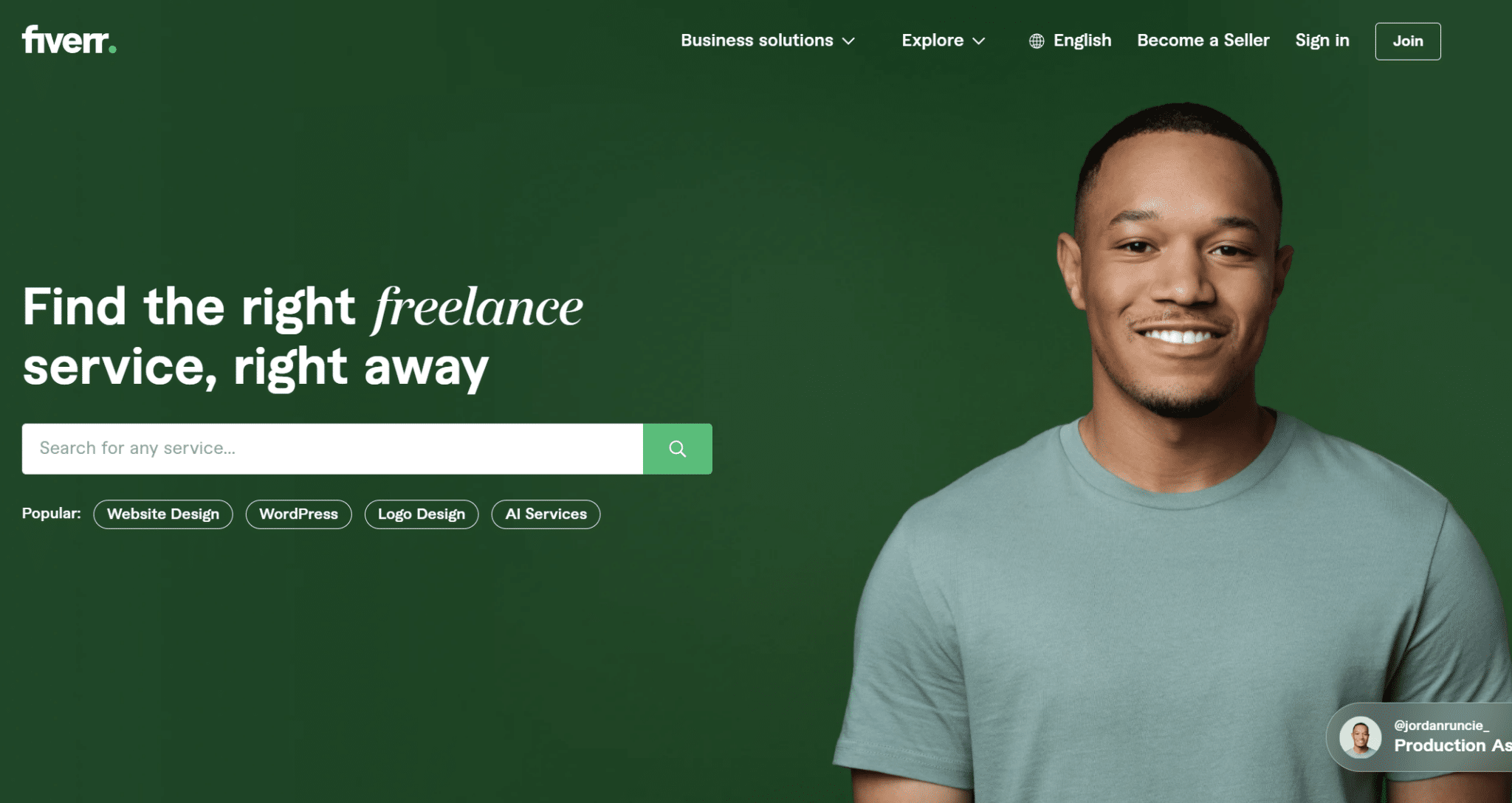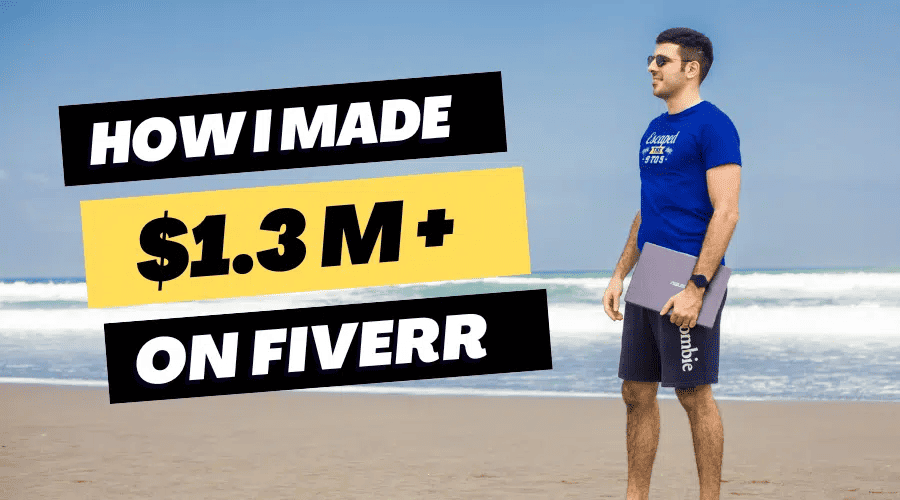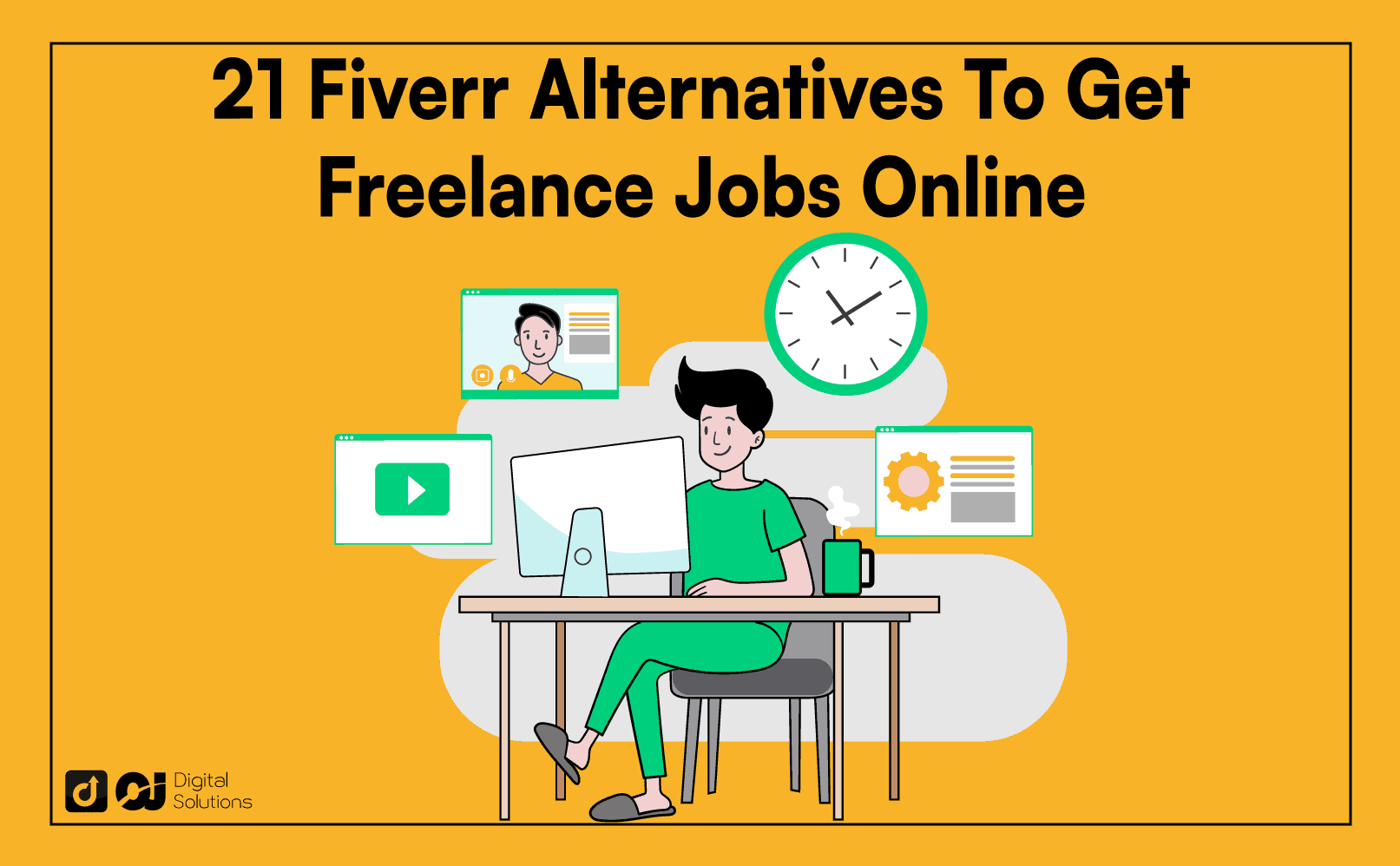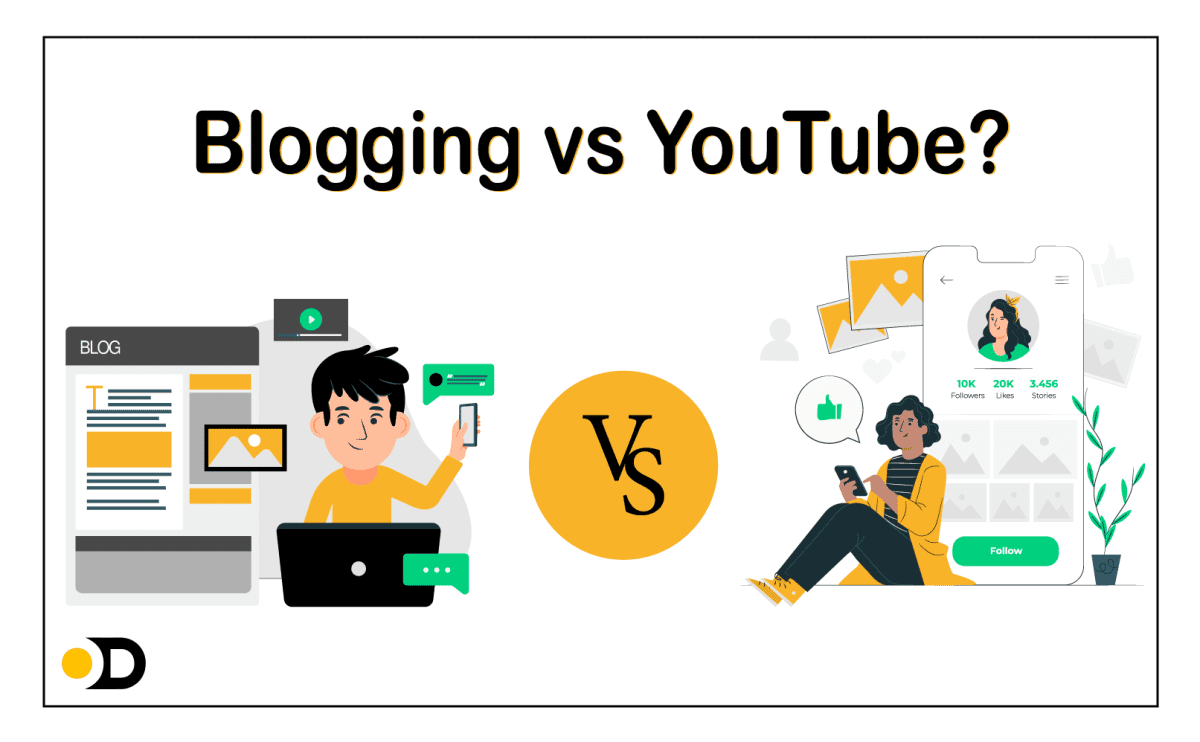If you’re here, you probably already heard of Fiverr.
You might be an established freelancer, or someone wanting to get started freelancing, or maybe an already established Fiverr seller looking to learn how to make money on Fiverr at a bigger scale.
Whatever the case may be, you’ve come to the right place.
I have personally made over $1.3M on Fiverr over 4 years, and in this guide, I’ll teach you how.
Now let’s get started with my story
The Beginnings
So, picture this: It’s 2018, my wife and I are chilling in Koh Samui, Thailand.
We’d just traded our regular jobs for the digital nomad life a few months back, and boy, were we excited.
We were working as freelancers offering Amazon listing writing and translation services.
Think catchy Amazon titles, captivating product descriptions, and the works. Plus, we ensured they ranked well on Amazon with some SEO magic and even translated them into other European languages.
Most of our clients came from word of mouth, as we were part of many e-commerce online communities.
It was just the two of us running the show.
My wife was writing the listings while I was the translation guy, juggling five languages like it was no big deal.
Then, one day, as I was sipping my coconut water, it hit me: We had to diversify our sources of leads and find more ways to get clients.
And that was when things got really interesting.

Rebranding our Fiverr gigs
Okay, so here’s the deal: Fiverr used to be that platform where you’d find some, well, not-so-great deals.
It had a bad rep for being a hotspot for super cheap, kinda sketchy services.
But here’s what I also knew: The Fiverr platform was a traffic goldmine with tons of potential buyers pouring in every month. That’s some serious untapped potential!
Around then, the whole “Selling on Amazon” business model was blowing up.
Everywhere I looked – YouTube, blogs, you name it – folks were raving about it. And guess what? They were all pointing viewers to Fiverr to grab some deals and save time.
I already had a Fiverr account and multiple gigs set up a few months back. But it was a hot mess.
The gig image was just a stock image with the Times New Roman font. The gig description felt like it was written in a hurry, and don’t even get me started on the lack of samples or positive feedback.
It was clear: Operation Makeover was a go.
I rolled up my sleeves and went full-on renovation mode. These are the elements that I updated:
The Gig Images
Gig Description
Fiverr profile
Dove deep into the competition, figuring out what made similar gigs pop, especially the ones ranked in the top spots, harnessing all the huge demand.
Didn’t want to straight-up copy them, of course, but a little bit of “inspired by” never hurt anyone, right?
Mixed in a bit of our unique flavor, and voilà!
Our best-seller gig was reborn.

The Climb to $10,000: Growth, Mistakes, and Lessons Learned
I woke up the next morning, and we got our first sale!
Soon after that first sale, our Fiverr notification bell wouldn’t stop ringing.
It was awesome but also a bit overwhelming. The demand was surging, and we were not prepared for this at all!
Our first instinct? Hire more people.
So we dove into the hiring game, searching for writers to write those Amazon listings.
But, let me tell ya, hiring is an art, and we were no Picassos. We tried saving a buck by going for the low-cost writers, but that backfired big time.
Negative feedback rolled in, and often, we found ourselves burning the midnight oil just to redo the work.
Assessing the quality of a writer’s work was tough without a structured hiring process in place.
We had to fulfill orders
But every challenge brought a lesson. We knew we had to streamline things.
We also refined our descriptions, adjusted our gig packages, and polished the FAQ section to sidestep any miscommunications.
The journey to $10,000 wasn’t just about the money; it was about learning, evolving, and fine-tuning our craft.
On the Verge of Burn Out
Alright, let’s keep it real. Scaling up on Fiverr? Not a walk in the park. Actually, it was one of the hardest things I have ever done in my life.
Compared to other freelancer platforms, Fiverr is a game on its own.
Fiverr is super fast-paced. Prospects expect to get an instant response when they reach out to you.
If you don’t reply within 10 minutes, they’ll just go to your competitors.
Also, if you don’t reply fast, this will affect your profile’s stats.
Some clients were a breeze to work with; others were a pain…
But the ones that were a pain made up a mere 2% of our entire customer base and yet caused 98% of my stress and unhappiness.
In a typical agency, you can choose who you work with. And if they don’t like your work, you can simply issue a refund and move on with your life.
As a Fiverr seller, anyone can order from you. And if they don’t like your work, you need to cancel the order, and that will be a negative point in your profile performance, leading to a drop in ranking.
So, you can’t choose who you work with (except by adding a “request to order button”, which is available if you subscribe to the Seller Plus program), and if a client doesn’t like your work, you are penalized for canceling the order.
Your ranking might drop overnight. No ranking = No more orders = No more money
We also had other stressful events that would happen like:
Since Fiverr is almost always on the customer’s side, some dishonest ones would order from us, use our work, and request a refund. When we asked them what they didn’t like, they would use illogical arguments just to get refunds.
One of the big competitors in our niche, with a whopping 14 employees and 5,000 customer reviews, got banned from Fiverr. Talk about stress! If they could get the boot, anyone could.
No option to give partial refunds (they recently added this option). So we had to refund an entire order or reject the refund and get a bad review.
And, for some weird reason, newbie gigs, some pretty meh ones, were hogging the spotlight. Made zero sense.
Oh, and the cherry on top? Some sellers were straight-up copying our stuff. Like, our exact words and pics. With the market getting jam-packed, finding a unique spot was tough.
My phone? It was buzzing non-stop. From the moment my eyes opened in the morning to the second they shut at night.
Yeah, I was making good money, pocketing 20k+ from Fiverr every month.
But after running this marathon for over two years? I was beat.
Making money online was awesome, but the burnout? Not so much.

Hiring & Refining our Processes
I was hitting my limit (mentally and physically).
As much as I wanted to, I couldn’t be everywhere at once.
I knew I needed help.
The problem was Fiverr’s system. The platform was designed for solo freelancers, not teams or agencies. (Which thankfully is getting way better starting mid 2023).
There’s no ‘Add Team Member’ button.
So, handing over my account details to someone working remotely across the ocean was no easy feat.
But, it was clear – either I trusted someone, or I was ready to pause the gig. I didn’t care about the money anymore, I just wanted to get my life back.
I created a list of all the tasks I was doing on a daily basis this included: replying to potential customers, sending quotes, closing deals, following up, replying to customer’s questions, processing orders, delivering orders, and communicating with the team.
If I wanted to ensure 24/7 coverage on Fiverr, I needed to hire 2 employees to cover different shifts.
I first hired two customer service representatives for round-the-clock availability and promoted one of my editors as project manager.
This setup didn’t work out at all.
Then I hired 2 project managers instead of the customer service representative to do all the tasks I used to do, with each one their own shift.
And guess what? It worked out great, and they’re still with us today.
I got obsessed with creating processes and systems to automate as much as possible.
Big shoutout to Notion, by the way – a total lifesaver for organizing everything.
These are some of the processes I created:
Ordering forms that would directly create a task on Notion for the team to work on
A hiring process for each key position in the company + an onboarding process
Templates to handle difficult customers
Training programs. I needed the managers to get the Amazon jargon, handle techy questions, and maintain our standards.
Bonus guides and set up follow-up emails to get customers to leave us a review
We didn’t stop there.
Hired a part-time HR to handle the recruitment and send offers.
Brought in editors to keep our writing standards high, and they even participated in the recruitment of new writers.
All in all? It was a full-blown revamp, and man, it felt good.

Building a Brand: Beyond Just a Gig
After having outsourced most of the business operations, I finally had the time to think about how to grow sales and put on my marketing hat.
Here’s how we pushed the needle to get our sales to break the $40,000/month mark:
Networking with a Twist: Instead of going it alone, we teamed up with fellow Fiverr sellers offering complementary services. Think of it as a buddy system. We’d refer clients to Amazon image designers and PPC managers; in return, they’d send folks our way. Win-win!
Diversify and Upsell: By launching new gigs, we catered to a wider audience and found ways to upsell our existing clients with these new offerings.
Shine Bright with Ads: Using Fiverr ads (promoted gigs), we got the spotlight on our gigs. It’s a bit like getting front-row seats at a concert; the visibility is unmatched.
Showcase Our Best Work: We didn’t just tell clients we were good; we showed them. Our portfolio became our brag book, flaunting our best work. And to sweeten the deal? On our website, for clients coming in from Google, we’d offer free listings or discounts in exchange for a video testimonial, making our pitch even more compelling.
The Power of Video: Adding a video to our gig was like flipping the switch. Suddenly, clients could see, hear, and connect with our brand. It was no surprise our conversions went through the roof.
Rubbing Shoulders with Course Creators: Teaming up with course creators in the Amazon domain gave us serious street cred. It wasn’t just about sales but about building a name in the industry. They would add us as the go-to service for their students.
Strategic Partnerships: We weren’t just promoting our brand by guest posting on major e-commerce blogs. We were establishing ourselves as thought leaders in the field.
The Pro Status: And of course, the icing on the cake – being elevated to Fiverr Pro. It wasn’t just a badge but a testament to our hard work, quality, and commitment.

This journey taught me the art of wearing many hats, from operations to marketing. But more than that, it showcased the power of strategy, collaboration, and constant innovation.
Key Takeaways and Lessons Learned
Productize Your Service
When we talk about scaling, one of the first steps is productizing your service.
Fiverr has this built into its system, guiding you to package your offerings.
But even if you’re venturing outside of Fiverr, be it on other platforms or your website, transforming your services into tangible, sellable ‘products’ is paramount.
This approach not only streamlines your operations but also makes it incredibly clear to your customers what they’re getting.
Niche Down to Scale Up
Here’s the paradox: To grow bigger, sometimes you need to think smaller.
By zoning in on a niche, we didn’t spread ourselves thin by trying to be a jack-of-all-trades Amazon agency.
We didn’t chase after every service related to Amazon.
Instead, we drilled deep into one specific area – listing optimization.
This laser-focused approach allowed us to hone our craft, build a stellar reputation, and truly become the go-to experts in our niche.
In essence, the road to growth isn’t always about Gig multiples and expanding in every direction. Often, it’s about picking a lane, mastering it, and then driving full speed ahead.
Embrace the 80% Rule
Don’t wait for the perfect fit. If someone can nail 80% of what you’re doing, bring them onboard. That 20% gap? It can be filled over time through training, experience, and collaboration. Instead of seeking a flawless solution, prioritize progress and adaptability.
Create SOPs from Day 1
Standard Operating Procedures (SOPs) might sound like dry corporate jargon, but they’re the backbone of a thriving business.
Think of them as the rulebook for your operations. By setting them up from day one, you’re essentially laying down the tracks for your business train to run smoothly. It ensures that everyone’s on the same page, mistakes are minimized, and there’s a consistent, quality output at every step.
Start by mapping out each phase of your customer’s journey, from the initial hello to the final deliverable, is essential.
Once you have that blueprint, you can refine, streamline, and perfect each segment.
It’s like setting up a production line for your services; every step is optimized for efficiency and excellence.
Define Clear Roles
Every team member should know their role inside out.
Ideally, each position should have max 2 – 3 goals with clear responsibilities.
Executive roles like writing or translating are easy to define. Their main objective is to produce high-quality work.
Evaluating performance becomes a matter of assessing the quality and consistency of their output.
It’s a direct cause-and-effect relationship: if the work meets the standard, the role is being fulfilled; if not, there’s a gap.
Management roles, on the other hand, are a different beast. It’s not always about tangible outputs but often revolves around coordination, delegation, and ensuring smooth operations.
For instance, if you have a Project Manager, their objectives might revolve around timely project completion, team coordination, and client satisfaction.
Performance can then be gauged by tracking project deadlines, team feedback, and client reviews.
The more specific you are with defining what success looks like for a management role, the easier it becomes to evaluate it.
Create a Hiring Funnel for Each Key Position
For every key position, have a hiring funnel.
Much like a sales funnel that guides potential customers through the buying process, a hiring funnel streamlines the recruitment process.
It ensures you get the right fit for each key position efficiently and effectively.
Have an Onboarding Process for Each Key Position
I recall my early days of managing my agency. I was so drowned in hiring that I overlooked the importance of guiding new hires once they joined.
An onboarding process isn’t just a warm welcome. It sets the tone for what’s expected and ensures every new member hits the ground running from day one
Without proper onboarding, no matter how talented an employee is, they might feel lost, overwhelmed, or just plain disconnected.
I learned it the hard way! Having a great candidate walk out the door just because they felt unsupported or unclear about their role was a tough pill to swallow.
Hire Employees that Align with Your Company’s Culture
Running a remote agency, especially one that’s so different from the conventional “9 to 5 office jobs”, comes with its fair share of challenges, especially when it comes to hiring.
Let me share my perspective on why company culture, especially in a remote setup, is so dang important.
Everyone’s Not Built the Same: Remote work offers freedom and flexibility, but it’s not everyone’s cup of tea. While some thrive in autonomy, others might feel lost and disconnected. The key is to identify the former, those self-driven individuals who don’t need hand-holding.
Ditching the Corporate Playbook: Many corporate employees are trained to operate within set boundaries. They have their defined roles, fixed hours, and a clear path.
While there’s nothing wrong with that, it might not jive with a more fluid, dynamic remote agency setup. These folks are used to a structured playbook, whereas in our world, sometimes you’ve got to write the playbook as you go.
Communication Styles Matter: Being a remote agency, we rely heavily on communication tools. And it’s not just about staying in touch, but how you do it. Some need the daily check-ins, the team meetings, the endless back-and-forths. But for our setup, we needed folks who could communicate efficiently, with no fluff.
Process Creation vs Process Execution: The ability to create processes on-the-go is a unique skill. Many people are great executors, but not everyone’s a creator. For a growing agency like ours, having proactive thinkers who can figure stuff out without a manual can be invaluable
To Change or Not To Change: Initially, I thought maybe we should change, maybe we should be more “corporate”. But here’s the thing: Why fit into a mold that’s not you? If you change the core of what makes your agency unique, would you still love it? Probably not.
Closing Thoughts: From Humble Beginnings to Timeless Lessons
Starting on a platform like Fiverr, designed primarily for individual freelancers, and expanding it into an agency model was no small feat.
Traditional business templates often don’t apply, and finding mentors in the field was tough.
Experience was the best teacher, and I don’t regret any of it. The lessons and the skills that I learned are priceless and will serve me in any business I decide to start.
The first business is always the hardest to start and manage.
Without prior business know-how, every step seems daunting. It’s a grind, where you’re constantly playing catch-up, compensating for the skills and expertise you haven’t yet honed.
The second, third, or even fourth venture becomes much easier.
To all the freelancers out there, dreaming big and aiming high, know this: your journey is unique, but you don’t have to walk it alone.
What would have made my journey better is having a mentor showing me the way.
A Fiverr business is not a typical agency, so it was difficult to find other people who have done it, I had to figure it out all by myself, and it took years instead of months.
If you have any questions, feel free to reach out.

Frequently Asked Questions (FAQ)
What is Fiverr?
Fiverr is an online marketplace where you can find freelance talent offering a wide range of services, from graphic design and writing to digital marketing and programming.

How to Create Gig on Fiverr?
Creating a gig on Fiverr is straightforward:
Log in to your Fiverr account or create one if you don’t have it.
After logging in, go to your Fiverr dashboard.
Look for the “Gigs” option in your dashboard and click on it.
Hit the “Create a New Gig” button to start the process.
Select the appropriate category for your service, like writing, graphic design, or programming.
Provide a clear and enticing gig title, along with a detailed description of your service. Specify what you offer, pricing, and delivery time.
You can include extras for additional services or faster delivery for extra income. (Optional)
Add high-quality images or videos showcasing your work to attract buyers.
Specify how long it will take to complete the gig.
If necessary, ask buyers for specific information or files needed to complete the job.
Review your gig details and click “Publish Gig” when you’re satisfied.
Share your gig on social media and optimize it for search keywords to increase visibility.
That’s it! Your gig is now live on Fiverr, and you can start attracting clients.
How Does Fiverr Pay You?
Fiverr offers several payment methods for freelancers to receive their earnings:
Fiverr Revenue Card: Fiverr offers its own prepaid card called the “Fiverr Revenue Card.” You can request this card, and your earnings will be loaded onto it. You can then use it to make purchases or withdraw money from ATMs.
PayPal: You can link your PayPal account to your Fiverr account to receive payments. Once connected, your earnings will be transferred to your PayPal account.
Bank Transfer (Direct Deposit): Fiverr provides the option to transfer your earnings directly to your bank account. You must set up your bank details via Payoneer in your Fiverr account settings to use this method.
Fiverr Balance: Your earnings can be stored in your Fiverr balance, which you can use to purchase services on Fiverr or withdraw to your preferred payment method.
Bank Transfer (Local Currency): This option is available in some countries, allowing you to receive earnings in your local currency directly to your bank account.
Check (Select Countries): In some countries, Fiverr offers the option to receive payments via check.
How Long Does it Take to Get Paid on Fiverr?
After an order is marked complete on Fiverr, there’s a clearance period: 14 days for basic sellers and 7 days for Top Rated and Pro Sellers. Post-clearance, you can withdraw funds. Withdrawal time varies by method: hours for the Fiverr Revenue Card, 2-3 days for bank transfers, and within hours for PayPal. Fiverr takes a 20% commission.
What Can You Do on Fiverr?
You can offer any digital services. Services offered can include data entry, graphic design, digital marketing services, blog post writing, article writing, social media posts, user testing, video animation, social media management, and more.
How Much Does Fiverr Cost?
For buyers, Fiverr charges a service fee that starts at $2 and can go up to 5% of the purchase price.
Sellers pay a 20% service fee on each completed order, with potential fee reductions as they advance to higher seller levels.
Prices for services on Fiverr vary based on the specific gig and can range from $5 to higher amounts.



